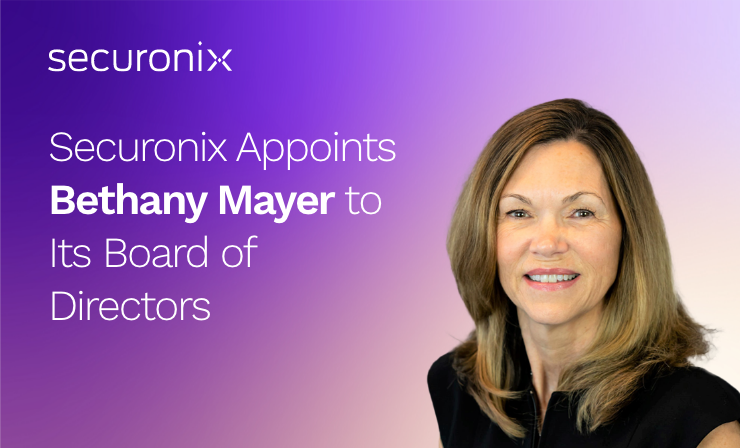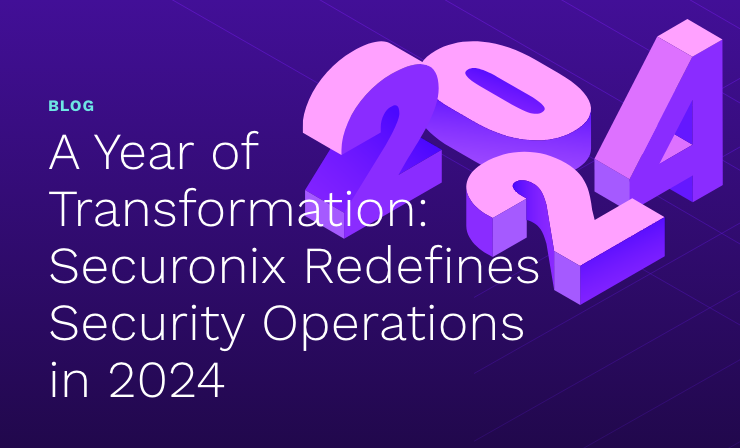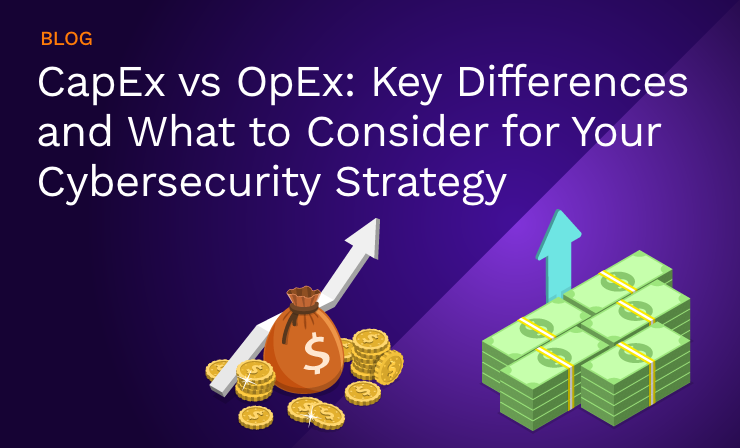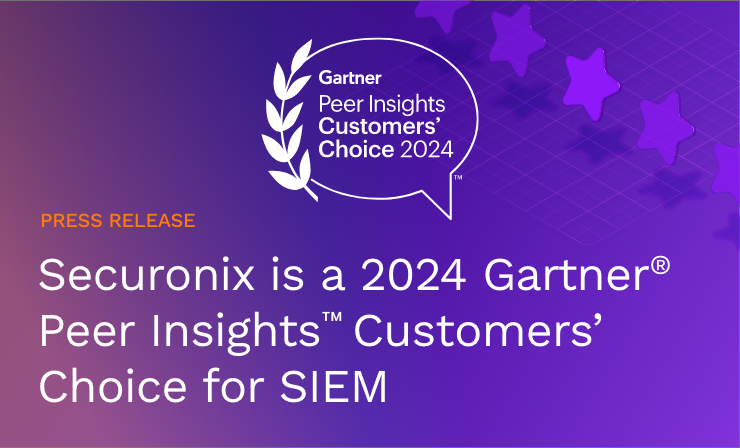- Why Securonix?
- Products
-
- Overview
- 'Bring Your Own' Deployment Models
-
- Products
-
- Solutions
-
- Monitoring the Cloud
- Cloud Security Monitoring
- Gain visibility to detect and respond to cloud threats.
- Amazon Web Services
- Achieve faster response to threats across AWS.
- Google Cloud Platform
- Improve detection and response across GCP.
- Microsoft Azure
- Expand security monitoring across Azure services.
- Microsoft 365
- Benefit from detection and response on Office 365.
-
- Featured Use Case
- Insider Threat
- Monitor and mitigate malicious and negligent users.
- NDR
- Analyze network events to detect and respond to advanced threats.
- EMR Monitoring
- Increase patient data privacy and prevent data snooping.
- MITRE ATT&CK
- Align alerts and analytics to the MITRE ATT&CK framework.
-
- Industries
- Financial Services
- Healthcare
-
- Resources
- Partners
- Company
- Blog
SIEM
By Augusto Barros, VP, Cybersecurity Evangelist, Securonix
For many organizations today, cloud computing plays an increasingly significant role in daily operations. Cloud usage is growing exponentially with businesses driving growth through digital experiences and making data available. Gartner experts predict more than 85% of organizations will embrace a cloud-first principle by 2025. Unfortunately, for many organizations security isn’t keeping pace as business shifts to the cloud. With more infrastructure, applications, and data residing in the cloud, today’s security teams find themselves challenged when monitoring and securing these open environments with traditional perimeter-centric security models.
Modern security information and event management (SIEM) requires the speed and scalability of analytics and a cloud-native architecture to keep up with today’s threats and support risk management efforts. In today’s business environment, security solutions must be cloud-friendly. This article begins a three-part series exploring the fundamentals of cloud-based SIEM as discussed in the Securonix Special Edition “Cloud SIEM for Dummies.”
What is Cloud SIEM
Cloud Security Information and Event Management (SIEM) is a modern approach to security management that leverages cloud computing to provide comprehensive, scalable, and efficient security monitoring and analysis. Unlike traditional on-premises SIEM solutions, cloud SIEM utilizes the power of the cloud to handle the vast amounts of data generated by today’s digital environments.
Benefits of Cloud SIEM Solutions
Traditional on-premises, perimeter-centric security solutions weren’t made for today’s open cloud-based systems and hybrid environments. Cloud environments demand responsive, flexible, scalable solutions, and modern cloud SIEM applications provide many advantages, including:
- Scalability – Cloud options outperform traditional architecture by providing the convenience of infinite scalability. While legacy data storage and management systems lag, cloud SIEM applications can adapt to search and analyze significant amounts of data in real time.
- Elasticity – Traditional security solutions often must estimate future resource needs, resulting in a shortage or surplus. Cloud applications can exactly match appropriated and needed resources, conveniently adding or removing resources as necessary.
- Resiliency – Adapting and adjusting to disruptions is critical for a security team. Traditional SIEM processes and tools are susceptible to many forms of disruption, lacking the resiliency to recover from unexpected disturbances. Cloud security applications operate in safe environments across multiple locations and, coupled with automatic backup and recovery functions, provide peace of mind.
- Lower cost and maintenance complexity – A cloud service does not require onsite personnel to maintain infrastructure, so it can deliver enterprise-class service at a considerably reduced cost by spreading expenses over a sizable customer base.
- Improved data access – Modern cloud SIEM solutions can access application program interfaces directly from other cloud-native applications, avoiding dependence on the often limited bandwidth of on-premises data centers.
- Shared knowledge – By making the extensive information databases available to analysts, along with shared crowdsourced community knowledge and real-time insights, cloud SIEM helps security teams improve threat detection and response capabilities.
- Improved time allocation – Running cloud SIEM applications allows teams to spend more time on higher reward watch-and-adapt activities rather than less rewarding run activities.
With these benefits, organizations can significantly enhance their security posture while reducing costs and complexity.
Cloud SIEM Model Options
Your organization can reap the numerous benefits of a cloud SIEM solution by using one of the following models – customer deployed, cloud-hosted, or cloud-native. Each model brings advantages and disadvantages. Which model you select is often based on individual appetite for responsibility, capital expenditure, and data control. Below we discuss all three cloud SIEM models in more detail.
Customer-deployed SIEM model
This model often serves as a comfortable introductory step into cloud security for organizations seeking a higher degree of data control and willing to take on more responsibility and capital expense. This model identifies as “infrastructure as a service” with a single customer shouldering the cost and responsibility for all infrastructure beyond the virtualized hardware. Single tenants face higher capital expenditure and maintenance costs with scalability limited by the existing architecture and system complexity.
Cloud-hosted SIEM model
This single-tenant model moves toward a structure of less capital expenditure and customer responsibility and more operational expense and vendor involvement. Vendors provide the hardware and software and deploy and manage the solution in the cloud. Cloud-hosted models afford easier scaling than customer-deployed models but at a higher cost. The customer gets the benefits of offloading technology management and support to the vendor, but the vendor is usually not able to offer an optimized price as the economies of scale are still limited by the single-tenant model.
Cloud-native SIEM model
This multi-tenant, complete software as a service (SaaS) model delivers the total value of a contemporary cloud SIEM. Service providers are responsible for all hardware, software, and surrounding architecture. Each tenant works from an individual user interface while backend components are spread across the customer base to keep costs low and time-to-value ratios high.
With a cloud-native model, tenants enjoy a dynamic, scalable application as a flexible operational expense rather than an upfront capital expenditure, placing more responsibility on the cloud provider. On the downside – all your organization’s data is in the hands of one vendor, which may run afoul of specific regulatory laws. Innovative shared responsibility models such as Securonix +Snowflake provide a viable solution for organizations that prefer more data control or are looking to avoid regulatory violations.
Lastly, for organizations desiring to outsource all security duties to a third-party provider, the option of engaging a managed security service can prove helpful. Managed security service providers can remove the need for a self-operated security operations center (SOC) by managing all security operations processes either in house or remotely. Be aware – this option reduces the level of control over the outcomes and requires continuous oversight of the service provider performance.
The Case for Cloud SIEM
For organizations doing business in today’s fast-paced, dispersed, digital landscape, the security of cloud data is a top priority. The advantages of adopting a cloud-based SIEM solution are numerous – scalability, elasticity, resiliency, lowered cost, real-time results, and overall efficiency make the shift to cloud-based security an easy decision for modern businesses.
Whether your team favors increased data control with a customer-deployed model, less responsibility and capital expense with a cloud-native model, or somewhere in between with a cloud-hosted or hybrid model, a cloud SIEM solution can help you future proof your organization. Please look out for our next article – Features of a Cloud-native SIEM – where we will continue discussing the basics of modern cloud SIEM solutions.
Related Resources
7 Things to Consider When Migrating to the Cloud







